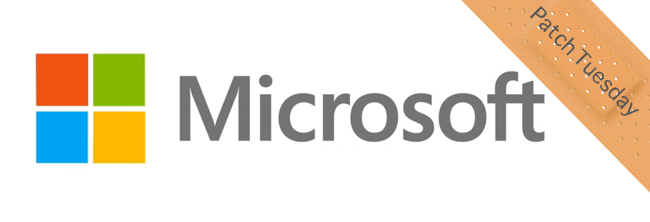
A
modern
Android
powered
smartphone
is
a
complex
hardware
device:
Android
OS
runs
on
a
multi-core
CPU
–
also
called
an
Application
Processor
(AP).
And
the
AP
is
one
of
many
such
processors
of
a
System
On
Chip
(SoC).
Other
processors
on
the
SoC
perform
various
specialized
tasks
—
such
as
security
functions,
image
&
video
processing,
and
most
importantly
cellular
communications.
The
processor
performing
cellular
communications
is
often
referred
to
as
the
baseband.
For
the
purposes
of
this
blog,
we
refer
to
the
software
that
runs
on
all
these
other
processors
as
“Firmware”.
Securing
the
Android
Platform
requires
going
beyond
the
confines
of
the
Application
Processor
(AP).
Android’s
defense-in-depth
strategy
also
applies
to
the
firmware
running
on
bare-metal
environments
in
these
microcontrollers,
as
they
are
a
critical
part
of
the
attack
surface
of
a
device.
A
popular
attack
vector
within
the
security
research
community
As
the
security
of
the
Android
Platform
has
been
steadily
improved,
some
security
researchers
have
shifted
their
focus
towards
other
parts
of
the
software
stack,
including
firmware.
Over
the
last
decade
there
have
been
numerous
publications,
talks,
Pwn2Own
contest
winners,
and
CVEs
targeting
exploitation
of
vulnerabilities
in
firmware
running
in
these
secondary
processors.
Bugs
remotely
exploitable
over
the
air
(eg.
WiFi
and
cellular
baseband
bugs)
are
of
particular
concern
and,
therefore,
are
popular
within
the
security
research
community.
These
types
of
bugs
even
have
their
own
categorization
in
well
known
3rd
party
exploit
marketplaces.
Regardless
of
whether
it
is
remote
code
execution
within
the
WiFi
SoC
or
within
the
cellular
baseband,
a
common
and
resonating
theme
has
been
the
consistent
lack
of
exploit
mitigations
in
firmware.
Conveniently,
Android
has
significant
experience
in
enabling
exploit
mitigations
across
critical
attack
surfaces.
Applying
years
worth
of
lessons
learned
in
systems
hardening
Over
the
last
few
years,
we
have
successfully
enabled
compiler-based
mitigations
in
Android
—
on
the
AP
—
which
add
additional
layers
of
defense
across
the
platform,
making
it
harder
to
build
reproducible
exploits
and
to
prevent
certain
types
of
bugs
from
becoming
vulnerabilities.
Building
on
top
of
these
successes
and
lessons
learned,
we’re
applying
the
same
principles
to
hardening
the
security
of
firmware
that
runs
outside
of
Android
per
se,
directly
on
the
bare-metal
hardware.
In
particular,
we
are
working
with
our
ecosystem
partners
in
several
areas
aimed
at
hardening
the
security
of
firmware
that
interacts
with
Android:
Bare-metal
support
Compiler-based
sanitizers
have
no
runtime
requirements
in
trapping
mode,
which
provides
a
meaningful
layer
of
protection
we
want:
it
causes
the
program
to
abort
execution
when
detecting
undefined
behavior.
As
a
result,
memory
corruption
vulnerabilities
that
would
otherwise
be
exploitable
are
now
stopped
entirely.
To
aid
developers
in
testing,
troubleshooting,
and
generating
bug
reports
on
debug
builds,
both
minimal
and
full
diagnostics
modes
can
be
enabled,
which
require
defining
and
linking
the
requisite
runtime
handlers.
Most
Control
Flow
Integrity
(CFI)
schemes
also
work
for
bare-metal
targets
in
trapping
mode.
LLVM’s1
CFI
across
shared
libraries
scheme
(cross-DSO)
is
the
exception
as
it
requires
a
runtime
to
be
defined
for
the
target.
Shadow
Call
Stack,
an
AArch64-only
feature,
has
a
runtime
component
which
initializes
the
shadow
stack.
LLVM
does
not
provide
this
runtime
for
any
target,
so
bare-metal
users
would
need
to
define
that
runtime
to
use
it.
The
challenge
Enabling
exploit
mitigations
in
firmware
running
on
bare
metal
targets
is
no
easy
feat.
While
the
AP
(Application
Processor)
hosts
a
powerful
operating
system
(Linux)
with
comparatively
abundant
CPU
and
memory
resources,
bare
metal
targets
are
often
severely
resource-constrained,
and
are
tuned
to
run
a
very
specific
set
of
functions.
Any
perturbation
in
compute
and/or
memory
consumption
introduced
by
enabling,
for
example,
compiler-based
sanitizers,
could
have
a
significant
impact
in
functionality,
performance,
and
stability.
Therefore,
it
is
critical
to
optimize
how
and
where
exploit
mitigations
are
turned
on.
The
goal
is
to
maximize
impact
—
harden
the
most
exposed
attack
surface
—
while
minimizing
any
performance/stability
impact.
For
example,
in
the
case
of
the
cellular
baseband,
we
recommend
focusing
on
code
and
libraries
responsible
for
parsing
messages
delivered
over
the
air
(particularly
for
pre-authentication
protocols
such
as
RRC
and
NAS,
which
are
the
most
exposed
attack
surface),
libraries
encoding/decoding
complex
formats
(for
example
ASN.1),
and
libraries
implementing
IMS
(IP
Multimedia
System)
functionality,
or
parsing
SMS
and/or
MMS.
Fuzzing
and
Vulnerability
Rewards
Program
Enabling
exploit
mitigations
and
compiler-based
sanitizers
are
excellent
techniques
to
minimize
the
chances
of
unknown
bugs
becoming
exploitable.
However,
it
is
also
important
to
continuously
look
for,
find,
and
patch
bugs.
Fuzzing
continues
to
be
a
highly
efficient
method
to
find
impactful
bugs.
It’s
also
been
proven
to
be
effective
for
signaling
larger
design
issues
in
code.
Our
team
partners
closely
with
Android
teams
working
on
fuzzing
and
security
assessments
to
leverage
their
expertise
and
tools
with
bare
metal
targets.
This
collaboration
also
allowed
us
to
scale
fuzzing
activities
across
Google
by
deploying
central
infrastructure
that
allows
fuzzers
to
run
in
perpetuity.
This
is
a
high-value
approach
known
as
continuous
fuzzing.
In
parallel,
we
also
accept
and
reward
external
contributions
via
our
Vulnerability
Rewards
Program.
Along
with
the
launch
of
Android
13,
we
updated
the
severity
guidelines
to
further
highlight
remotely
exploitable
bugs
in
connectivity
firmware.
We
look
forward
to
the
contributions
from
the
security
research
community
to
help
us
find
and
patch
bugs
in
bare
metal
targets.
On
the
horizon
In
Android
12
we
announced
support
for
Rust
in
the
Android
platform,
and
Android
13
is
the
first
release
with
a
majority
of
new
code
written
in
a
memory
safe
language.
We
see
a
lot
of
potential
in
also
leveraging
memory-safe
languages
for
bare
metal
targets,
particularly
for
high
risk
and
exposed
attack
surface.
Hardening
firmware
running
on
bare
metal
to
materially
increase
the
level
of
protection
–
across
more
surfaces
in
Android
–
is
one
of
the
priorities
of
Android
Security.
Moving
forward,
our
goal
is
to
expand
the
use
of
these
mitigation
technologies
for
more
bare
metal
targets,
and
we
strongly
encourage
our
partners
to
do
the
same.
We
stand
ready
to
assist
our
ecosystem
partners
to
harden
bare
metal
firmware.
Special
thanks
to
our
colleagues
who
contributed
to
this
blog
post
and
our
firmware
security
hardening
efforts:
Diana
Baker,
Farzan
Karimi,
Jeffrey
Vander
Stoep,
Kevin
Deus,
Eugene
Rodionov,
Pirama
Arumuga
Nainar,
Sami
Tolvanen,
Stephen
Hines,
Xuan
Xing,
Yomna
Nasser.
Notes








